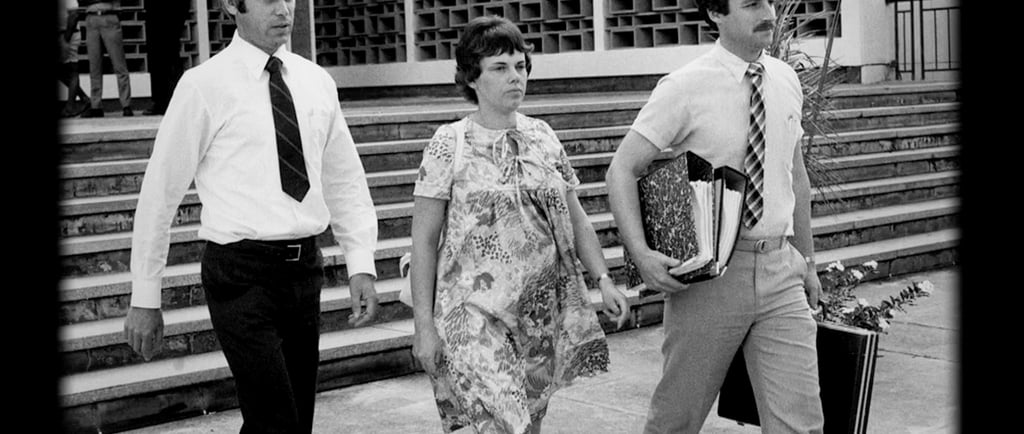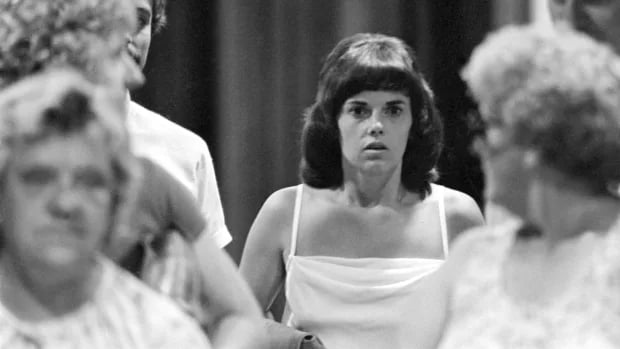Lindy Chamberlain: From Mother to Myth — The Story Behind Azaria’s Disappearance
Lindy Chamberlain’s story is a haunting reminder of how prejudice and myth can destroy an innocent life. Convicted for the disappearance of her baby Azaria, she endured years of public vilification and wrongful imprisonment. This article revisits key evidence supporting her claim of a dingo attack, exposes cultural biases and media sensationalism that fueled the miscarriage of justice, and highlights the eventual discovery that freed her. Lindy’s case remains a powerful example of why justice must be rooted in truth, empathy, and respect for cultural knowledge.
DISTURBING CASESGRIM REALITYFAITHABYASSHOPE
7/5/20255 min read


The Context of Azaria's Disappearance
Lindy Chamberlain was never just a mother. She became a symbol — a scapegoat dragged through the unforgiving machinery of fear, myth, and media spectacle. Her story is not only about a tragic loss but also a harrowing journey through prejudice, cultural ignorance, and a justice system ready to convict before understanding. Beneath the blazing sun of Uluru, the truth became obscured by suspicion and narrative. It was a nightmare where nature, myth, and society collided — and an innocent woman paid the price.
The Fateful Day at Uluru
On August 17, 1980, Lindy and Michael Chamberlain, along with their three children, set out on a family camping trip near Uluru, the sacred monolith deep within Australia’s Northern Territory. It was supposed to be a simple holiday, a time of connection and spiritual grounding. But the desert’s serene facade masked a cruel fate. In the early hours, Lindy’s nine-week-old daughter, Azaria, vanished from their tent.
What Lindy said next shocked the nation: a dingo, the wild native dog often dismissed as a nuisance, had taken her baby. To many, this claim seemed absurd—no wild animal could snatch a child so boldly, and certainly not near a well-frequented campsite.
A Society Unready to Believe
Australia in 1980 was not a place where a story like Lindy’s could be met with open ears. The nation was gripped by a deep distrust of anything foreign or unusual. The conservative media seized on the story, portraying Lindy as cold, strange, and evasive. Her reserved, religious demeanor was weaponized against her. The public and press questioned her maternal instincts, scrutinizing her every action through a lens of suspicion.
Within this atmosphere, the idea of a dingo attack was dismissed outright by many experts and officials alike. Dingoes were often seen as wild dogs — a threat, yes, but never predators capable of such a crime. The media frenzy amplified this disbelief, framing Lindy as a possible murderer trying to cover up her crime.
The Trial: Theater of Prejudice
What followed was one of Australia’s most infamous miscarriages of justice. The trial became less about facts and more about narrative control. Prosecutors portrayed Lindy as a manipulative woman who killed her daughter in a fit of rage or neglect. The dingo defense was ridiculed, dismissed as fantasy.
Evidence was cherry-picked to support the prosecution’s theory. Some forensic testimony was presented with questionable accuracy. For instance, a stain found in the family car was declared to be fetal blood, a crucial piece linking Lindy to a supposed crime. This finding was later discredited, but it had already shaped the public’s and jury’s perception.
Witness testimonies were twisted or misunderstood. Several witnesses reported hearing a baby’s cry near the campsite or seeing dingoes prowling the area before Azaria’s disappearance. These statements, however, were overshadowed by the prosecution’s narrative and the media’s portrayal of Lindy.
The Missing Jacket and Key Evidence Ignored
For years, the critical piece of evidence—the missing matinee jacket Azaria was wearing—was nowhere to be found. Its absence was used as supposed proof that Lindy fabricated the dingo story. But in 1986, this jacket was discovered near a dingo lair, miles from the campsite. This discovery dramatically shifted the case.
The jacket’s location and condition were consistent with an animal attack, contradicting the prosecution’s claims. The realization dawned slowly on the legal system and public: Lindy might be innocent after all.
Indigenous Knowledge and Dismissal
The trial highlighted a painful truth: Australian institutions often dismissed Indigenous knowledge and the realities of the land. Aboriginal people had long understood the behavior of dingoes and their interaction with the environment. But their insights were ignored or sidelined in court and media discussions.
This systemic oversight contributed to the wrongful conviction. The courts failed to consider cultural and ecological context, choosing instead to favor sensational narratives that fit public expectations.
Aftermath: Years Lost and Finally Vindicated
Lindy Chamberlain was convicted of murder in 1982 and sentenced to life imprisonment. The weight of public judgment and the court’s decision fell heavily on her and her family. Her husband, Michael, was also tried and convicted of being an accessory after the fact but later acquitted.
It was not until a coroner’s inquest in 1986 that the case was reopened in earnest. The discovery of Azaria’s jacket, combined with mounting scientific evidence supporting the dingo attack theory, forced the justice system to reevaluate.
In 1988, the Chamberlain convictions were overturned, and Lindy was released. Her exoneration was a landmark moment for justice in Australia, but it came after years of suffering, public vilification, and personal loss.
Media’s Role: From Trial to Redemption
The media played a double-edged role in Lindy’s story. Initially, it sensationalized and perpetuated falsehoods, feeding public hysteria. Headlines questioned Lindy’s character, motherhood, and truthfulness. However, as new evidence emerged, the media’s tone shifted, highlighting the miscarriage of justice.
The case exposed the dangers of media-fueled trials by public opinion, where facts are sacrificed for sensationalism. Lindy’s story serves as a cautionary tale about the power of narrative and the need for responsible journalism.
Calls for Justice and Lessons Learned
Lindy Chamberlain’s case remains a stark reminder that justice must be grounded in evidence, cultural understanding, and compassion. It exposes how systems can fail those who do not fit society’s expectations and how dangerous myths and biases can destroy innocent lives.
Her resilience and eventual vindication call on us to challenge prejudice wherever it exists—in courts, media, and culture. The legacy of this case continues to influence legal reforms, forensic science practices, and public awareness about indigenous knowledge and animal behavior.
Final Reflections: The Human Cost of a Myth
Azaria Chamberlain’s disappearance was a tragedy beyond question, but the tragedy multiplied in the aftermath. Lindy Chamberlain’s transformation from grieving mother to public pariah was not due to evidence but to society’s unwillingness to believe a different truth. Lindy Chamberlain’s story is a powerful reminder of the dangers of prejudice, rush to judgment, and systemic failure. Yet, amid the injustice and suffering she endured, her resilience and unwavering faith never wavered. Her courage to maintain hope, even when the world seemed to condemn her, is a testament to the strength of the human spirit.
Her eventual vindication stands as a beacon of hope that truth can prevail, even in the darkest times. Lindy’s journey encourages us to hold faith—not only in justice but in humanity’s capacity to learn, change, and grow. It is a call to remain vigilant against injustice and to foster compassion, understanding, and hope in the face of adversity.
This story is a call to confront our assumptions, listen deeply to marginalized voices, and pursue justice that honors both facts and humanity.
Sources
The Chamberlain Case: The Death of Azaria - Australian National Archives
Evil Angels by John Bryson (Summary & Reviews)
Australian Law Reform Commission - Chamberlain Inquiry
Media Coverage Archives 1980–1988 (Trove - National Library of Australia)
Lindy Chamberlain Interview & Documentary Clips (SBS)
🔍 SEO Keywords
Lindy Chamberlain wrongful conviction, Azaria Chamberlain dingo attack, Lindy Chamberlain trial evidence, Australian miscarriage of justice, dingo defense case


Despair
A dark exploration of societal decay and despair.
Void
+1234567890
© 2025. All rights reserved.
Any comments, business inquiries, ideas, or stories, let us know
